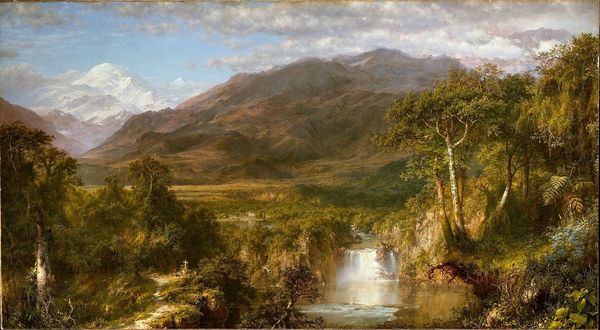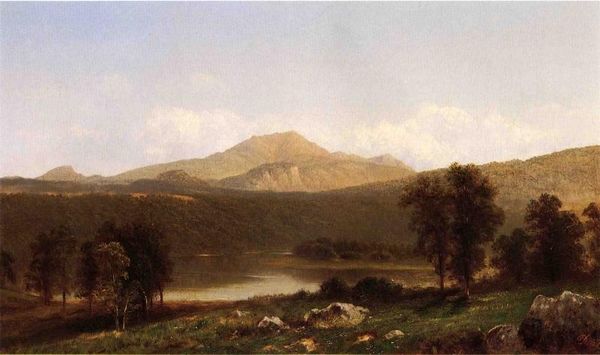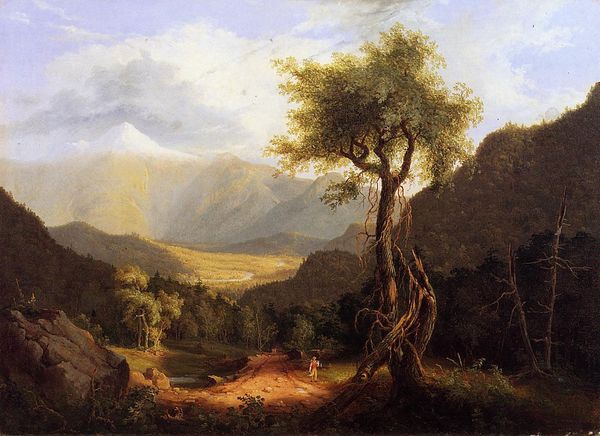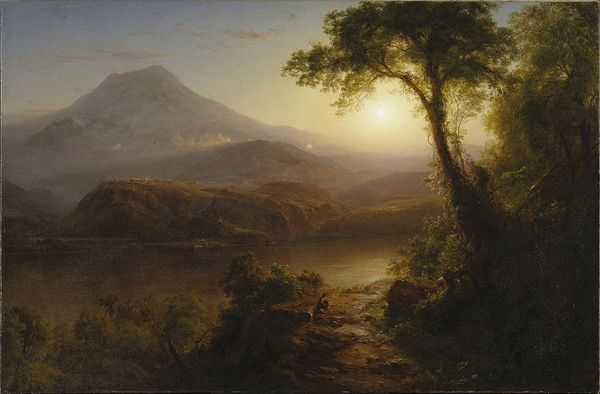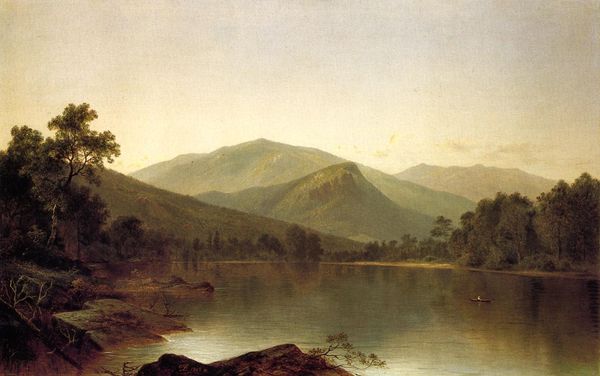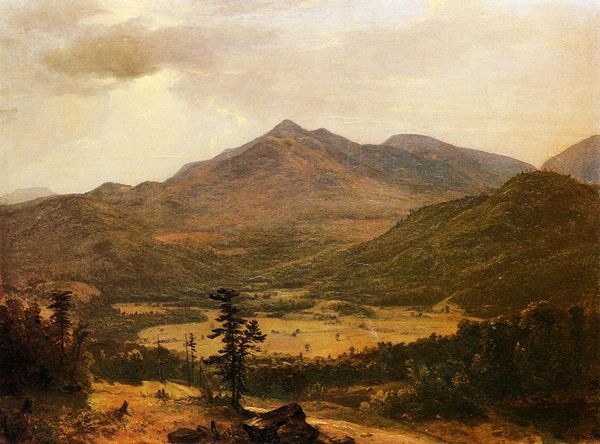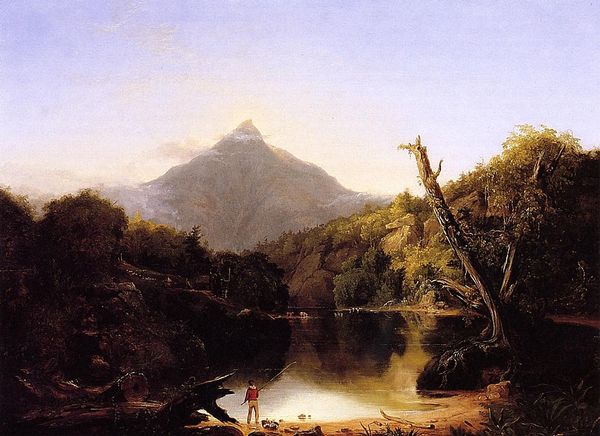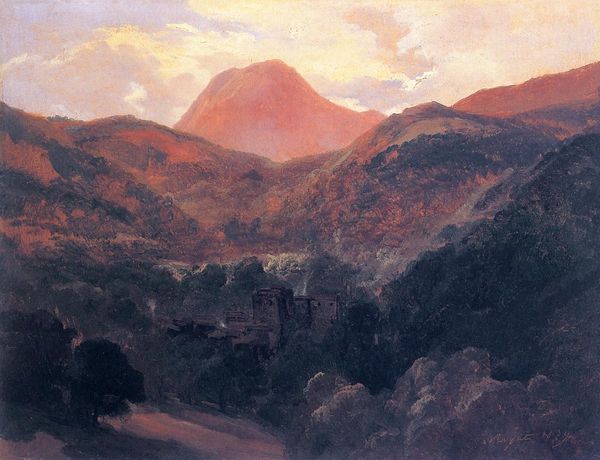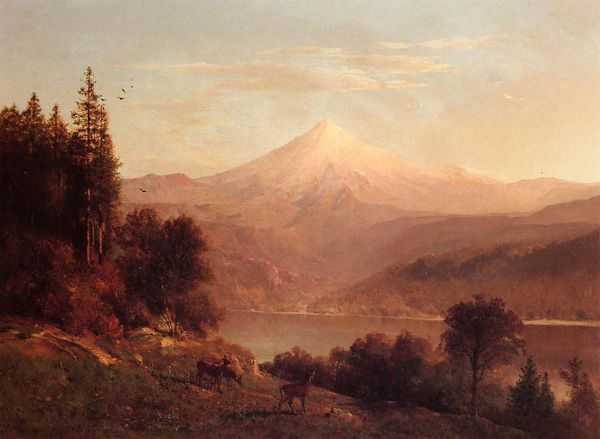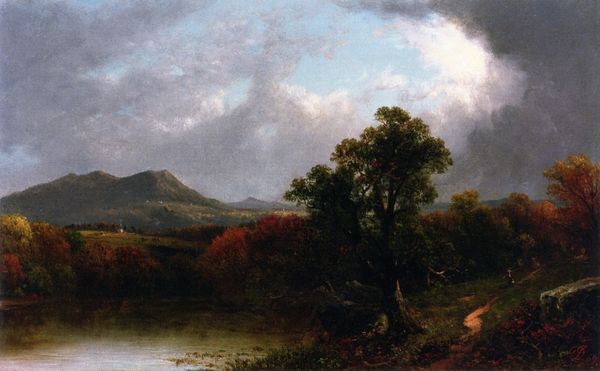
Dimensions: 91.44 x 147.32 cm
Copyright: Public domain
Curator: We're looking at "Mount Washington," painted in 1862 by Albert Bierstadt, a leading figure of the Hudson River School. Editor: It's quite grand, almost theatrical, in its composition. The way the mountain dominates the scene, with those hazy layers receding into the distance. It evokes a real sense of sublime awe. Curator: Indeed. Bierstadt and others from the Hudson River School believed in the spiritual and moral significance of the American landscape. The paintings reflected the belief that untamed nature was the manifestation of God and that westward expansion was the will of God. It reflected and justified Manifest Destiny, influencing governmental policies regarding Indigenous removal. Editor: I see that grand, sweeping perspective. It's masterfully constructed, the foreground with those dark, brooding trees contrasting with the ethereal light illuminating the peak. There's a distinct geometric quality too— the triangles of the mountain, repeated and echoed in the forms of the hills below, provide stability and balance. Curator: Precisely, while on the surface, Bierstadt's paintings reflect a peaceful American landscape, the realities and implications of colonial violence are missing from the frame. These paintings shaped a specific national identity rooted in land ownership and capitalist gain at the expense of the environment and its inhabitants. Editor: Interesting point. Focusing on form, look at the texture Bierstadt achieves with oil paint. The varied brushwork and use of plein-air techniques capture the essence of light. Curator: Bierstadt also made some careful decisions on the placement of figures, observe the presence of people on the lake; while small, they are there to signify that humans can and should interact with this space. This again plays into a justification for the displacement of Native peoples off this land. Editor: Your comments give us more insight into this piece; personally, the artist's treatment of light remains, to me, the most captivating element of "Mount Washington". The gradation from dark to light leads the viewer's eye directly up the mountain, and speaks to its beauty more broadly. Curator: By viewing these works from various angles, we can get a more comprehensive grasp of the artwork's cultural impact.
Comments
No comments
Be the first to comment and join the conversation on the ultimate creative platform.
